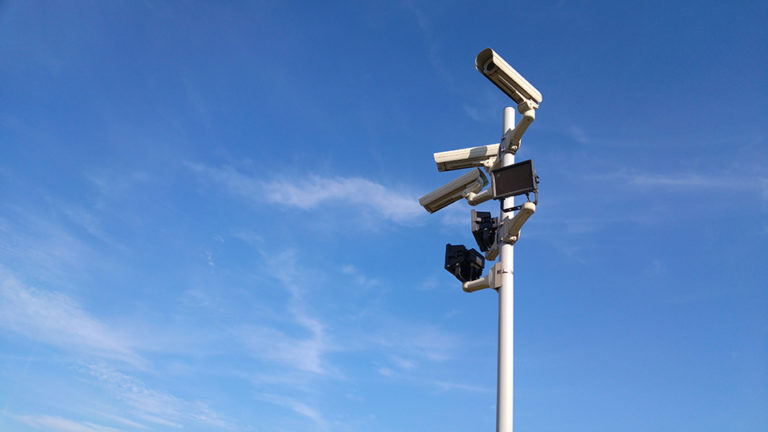Quality video surveillance is particularly relevant to our government customers. While budgets can be less of an issue at the federal level, state and local governments often see cost as a significant barrier. This must be balanced with the very real need to ensure public safety.
Don’t fret. While there’s no doubt that IP video capabilities have caught-up to once-fanciful Hollywood renditions, there’s no reason a budget-conscious government customer can’t leverage high-quality IP video to protect citizens and enforce the law.
Share Costs and Cameras
Public-private partnerships (P3s) are the backbone of effective surveillance integration because they greatly alleviate municipal budget issues. The local business community – whether through the Chamber of Commerce or otherwise – can collectively form a non-profit aimed at procuring surveillance assets on behalf of the municipality.
We’re all playing in the same sandbox. This lesson was especially stark immediately after 9/11, when the federal government reorganized federal law enforcement and intelligence agencies and formed the Department of Homeland Security. This was all to enable and promote increased sharing of intelligence and resources.
Smaller municipalities can do the same thing with their existing surveillance assets. Local police, transportation authorities, and other government agencies each operate their own surveillance networks. When these government systems are integrated into a larger whole, their value is far greater than the sum of its parts.
Another option is to initiate a camera-sharing initiative between public and private entities. This provides law enforcement access to a larger network of cameras owned by private businesses. These additional camera feeds can be routed to a central video management system.
The Latest Technology
What costs more, a pan-tilt-zoom (PTZ) camera or a panoramic camera, all else being equal?
Now what costs more, a network of PTZ cameras or one panoramic camera that covers the same area? It’s a rhetorical question that points to a larger reality: the latest technology costs more than yesterday’s technology, but because it can be deployed more efficiently, it’s actually cheaper.
One PTZ camera can cost far, far less than one gee-whiz wide-angle camera. But to achieve the same coverage, you’ll have to install multiple PTZs. I’m no Vanderbilt, but more cameras and more labor for an equal level of detail…
…equals less value.
The latest technology is easier to use. As human-centered design gains momentum, the user experience improves. This means you’ll spend less time and resources training personnel to operate the latest Video Management Systems (VMS), and you’ll optimize your surveillance capacity sooner and with less cost.
The latest technology is future-proof. You can get a flexible platform that accommodates CCTV, analog, and IP systems. This save upfront equipment and installation costs (you don’t have to replace every camera in a network) and allows future migration to a full-IP system as the budget warrants, supporting long-term growth.
The latest technology can raise revenue and pay for itself (eventually). When I drive to the Denver International Airport, my license plate number is recorded by license plate cameras deployed along the E-470 expressway. A few weeks later, I get a toll bill. These all-weather IP cameras are expensive, but they cost the state far less than a full complement of employee compensation and pension packages, and… they raise significant revenue.
Maintenance
Everything I’ve covered so far is for naught if your IP video surveillance system isn’t properly maintained. There are countless instances of police investigating a crime, often a murder, in areas where surveillance cameras were inoperable. Relying on your integrator to proactively maintain the system was acceptable in the past, but not in the information age.
Bold Network Navigator is a network tap that can interface with the VMS and each of your cameras to relay video feeds and enable remote device health/availability monitoring. Network Navigator can also provide vendor remote support to conduct remote diagnosis and repair, as well as provide remote firmware and software updates.
With Bold Network Navigator, even maintenance is easier.
Integration
Municipalities can maximize their investment by integrating IP video into a wider security package that includes monitoring and dispatch. Using Bold event monitoring solutions, you can tie your video feed into an alarm monitoring system that also interfaces with your access control and video intercom systems. Particularly sensitive areas can benefit from remote guard tours powered by Network Navigator, which can provide remote control of access control systems, IP video feeds, and video intercom.
Sources:
Duncan Robson’s YouTube page:
https://www.youtube.com/channel/UChXbIfh2WQLZTHNfcIvX9gA
5 Best Practices for Video Surveillance in Municipalities (Security Today):
